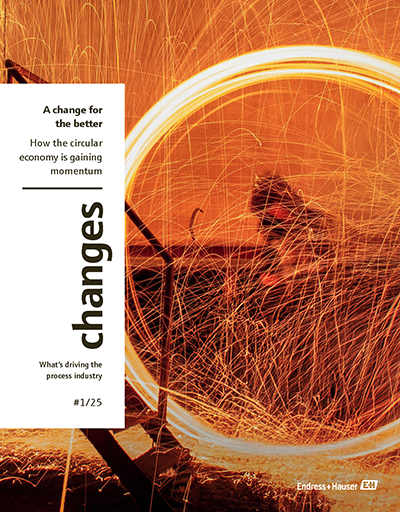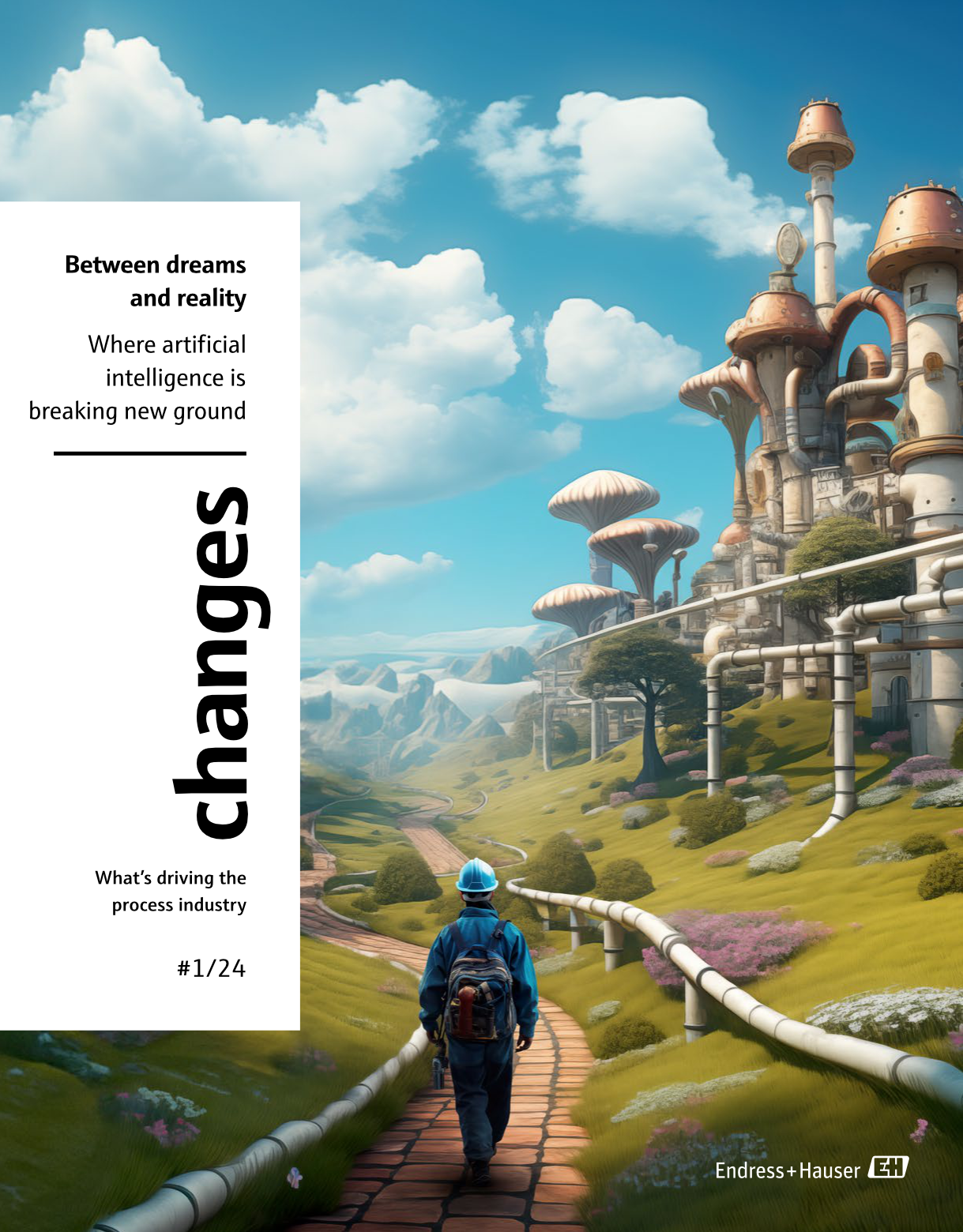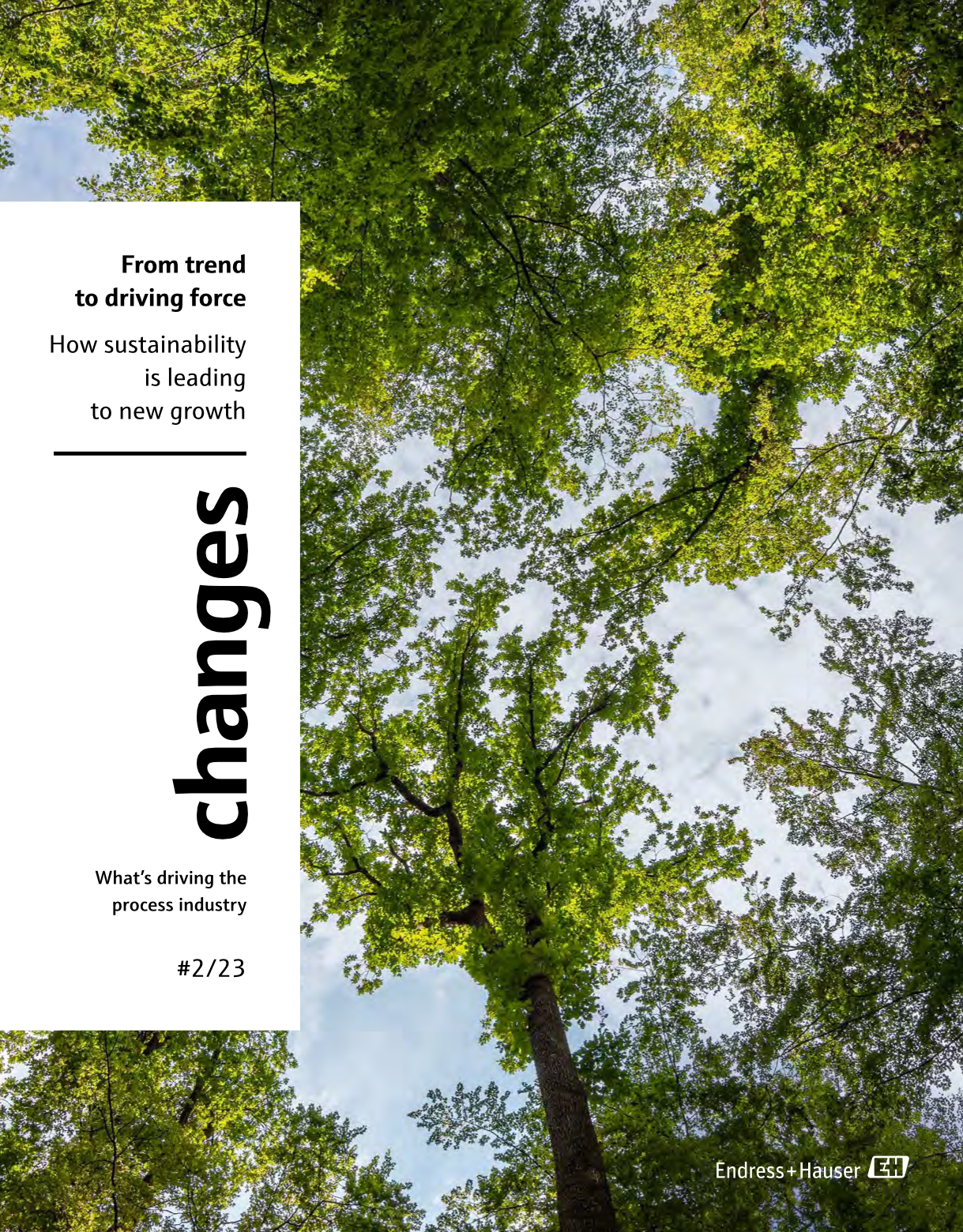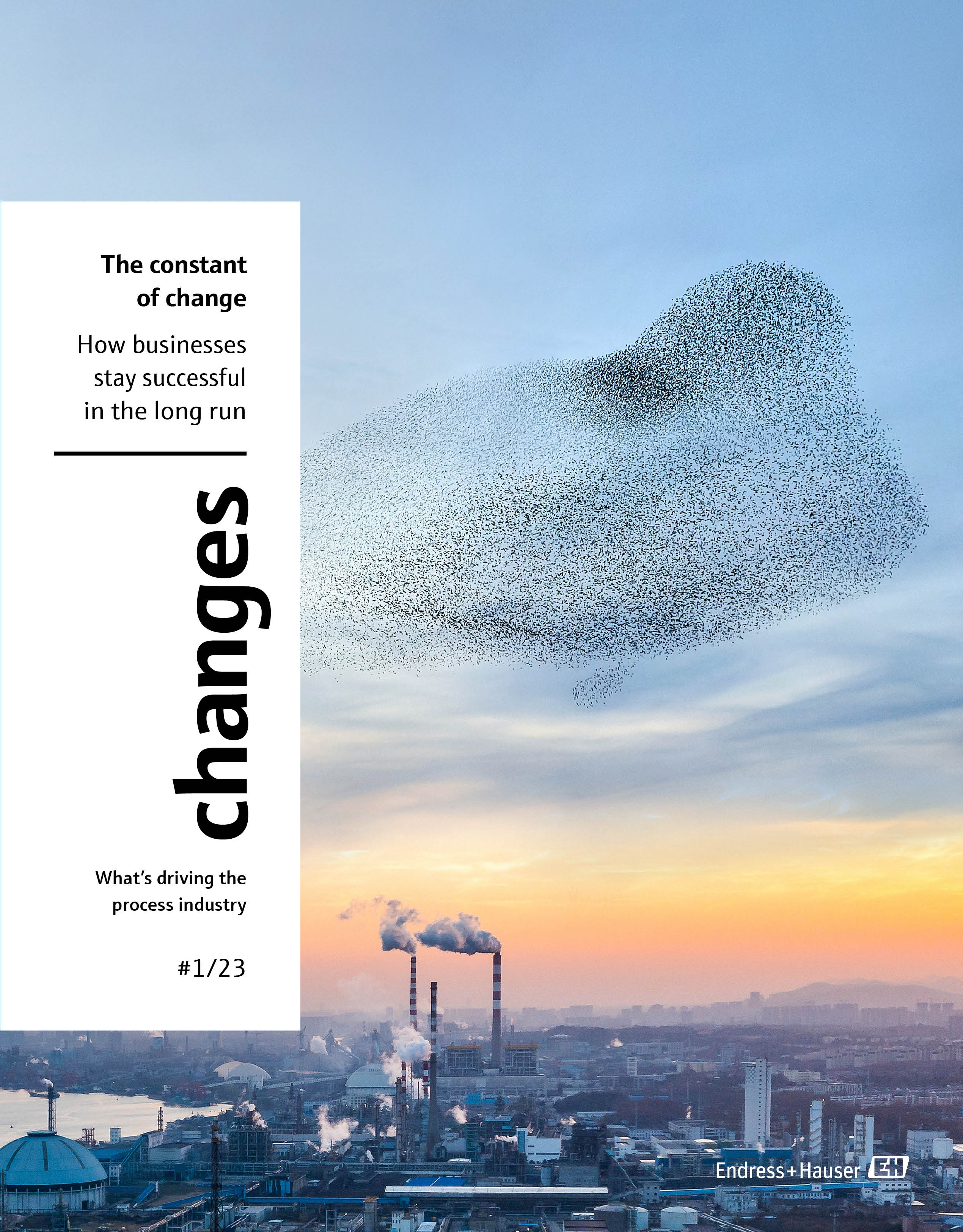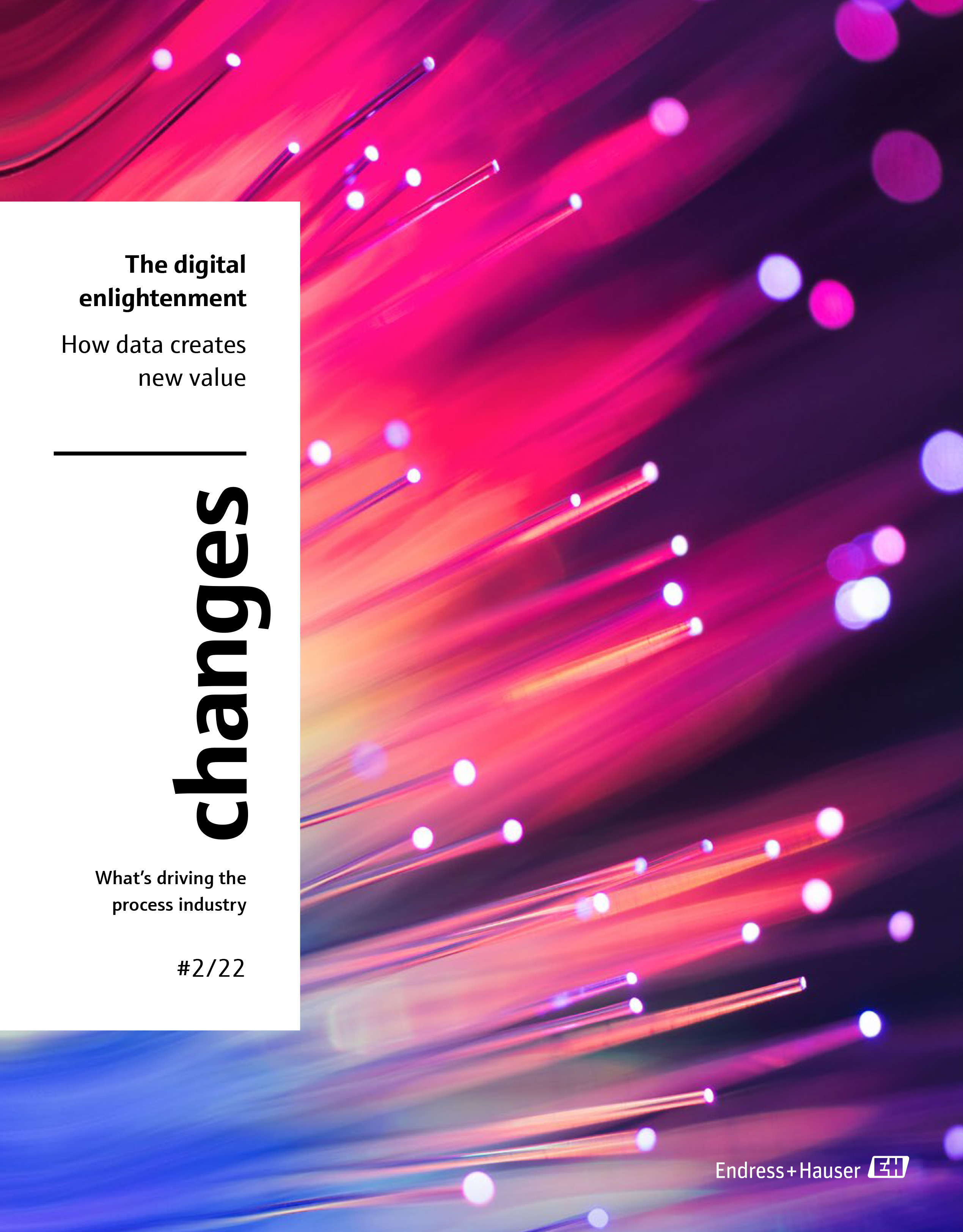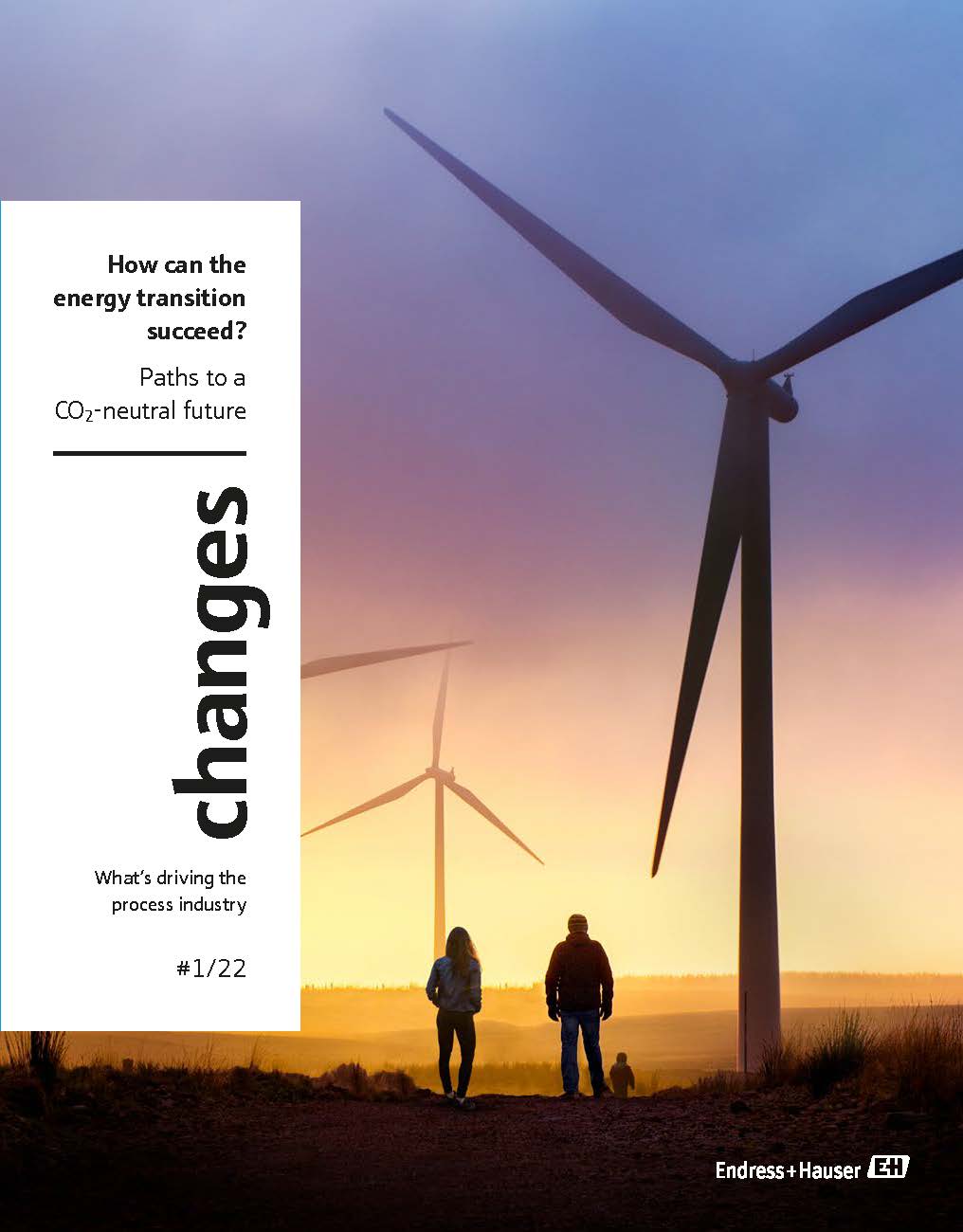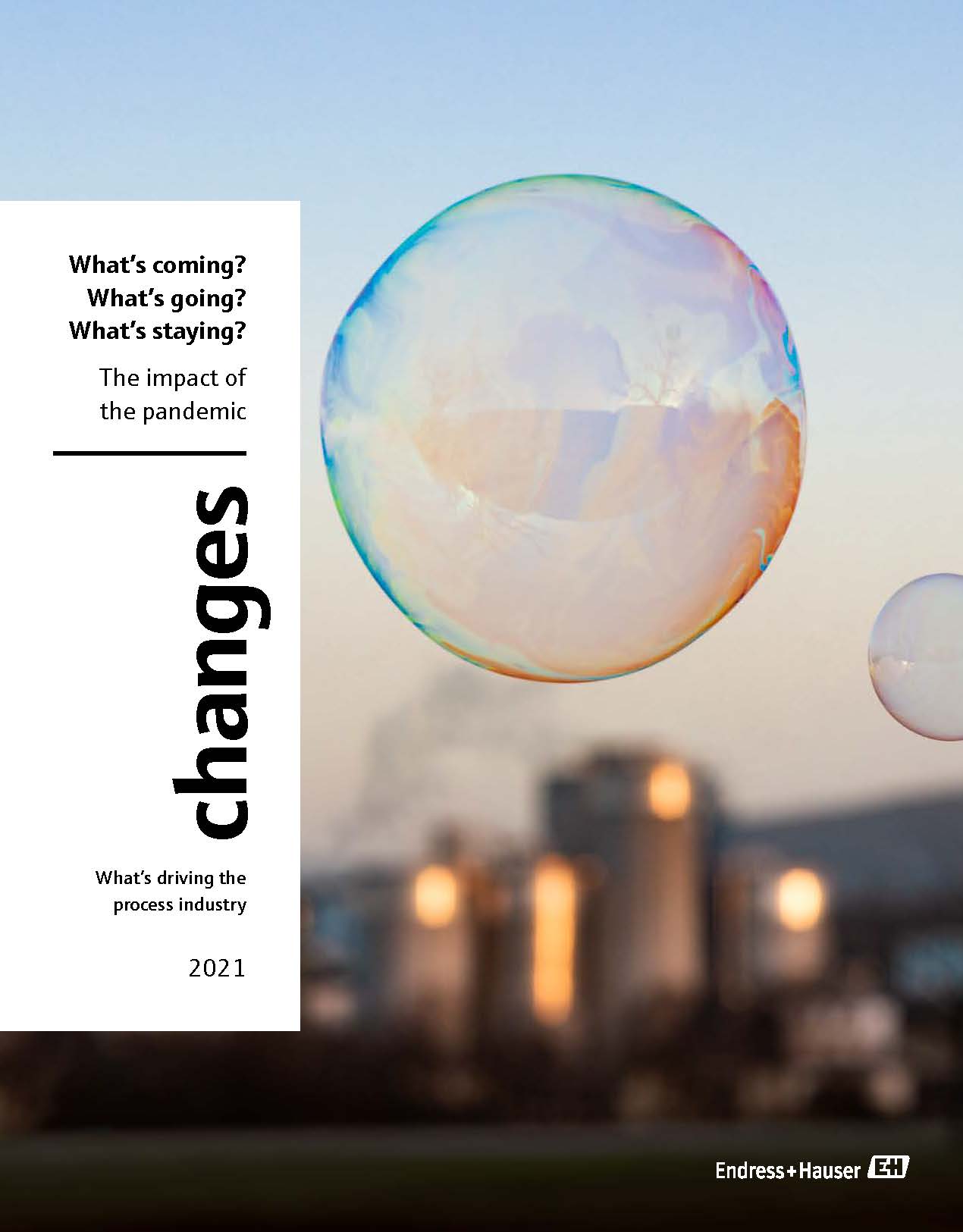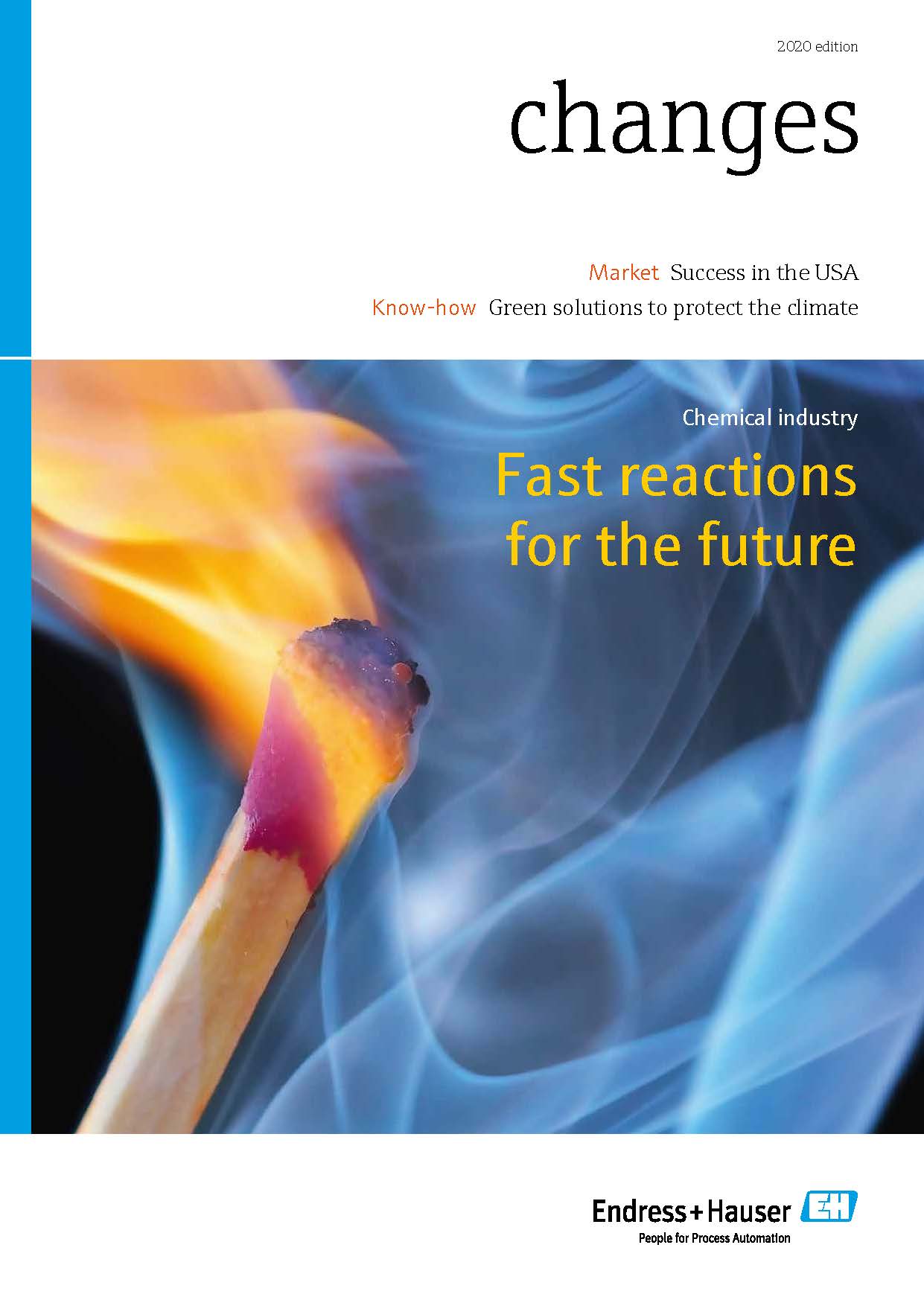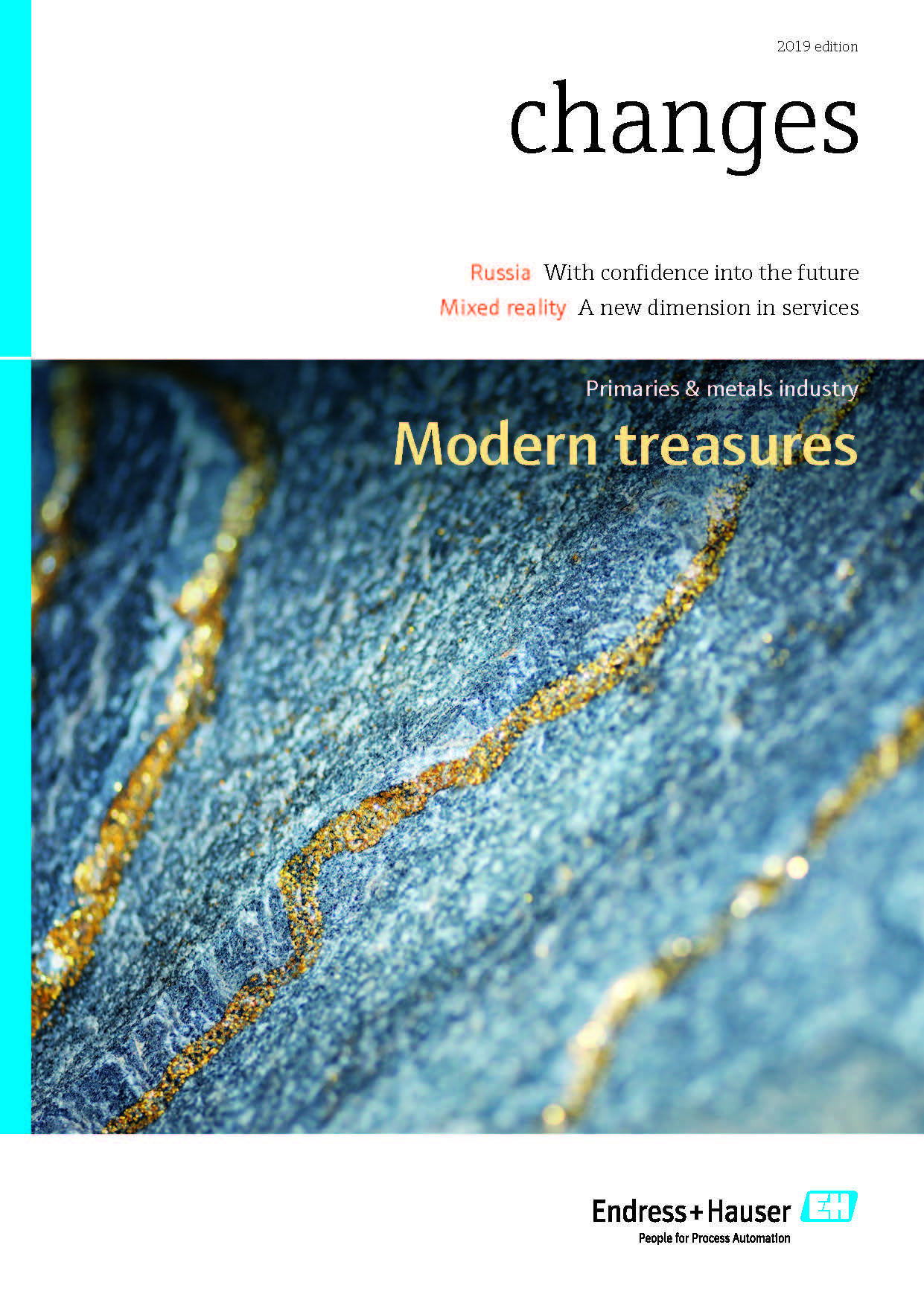Pulling in unison
The transition to a circular economy can only succeed if its many stakeholders work together as one, says Covestro’s chief technology officer Thorsten Dreier. For Endress+Hauser CEO Peter Selders, willingness to cooperate is therefore the key.
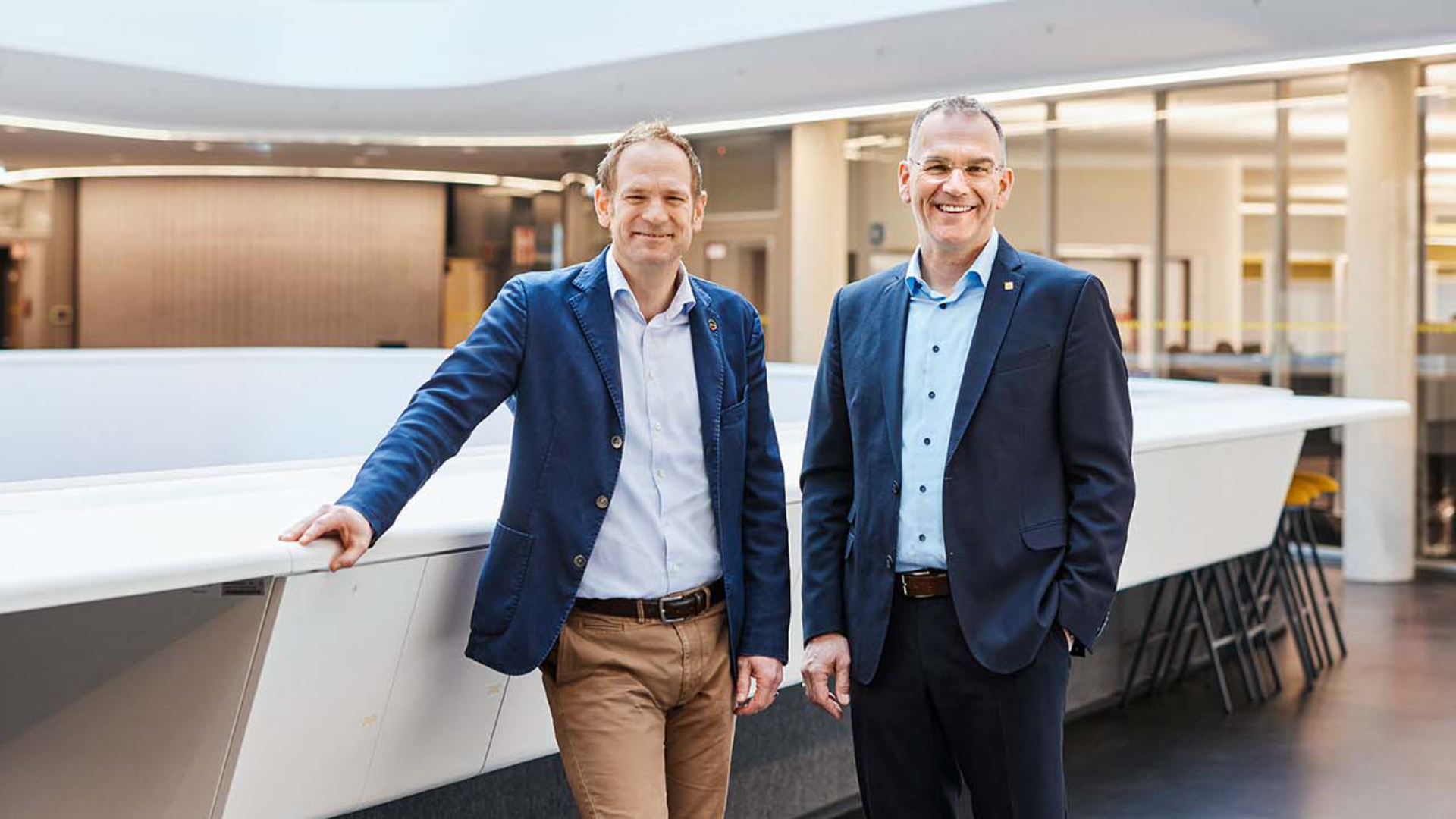
Mr Dreier, have you created a circular economy in your private life?
Dreier: We at Covestro have long scrutinized every one of our ideas, projects and actions for their sustainability and contribution to our vision of a circular economy. I too have adopted this way of thinking in my life outside the company. Of course, I avoid disposable products whenever possible. And where that’s not possible, I look closely at quality and durability in clothing, furniture, electronics and so forth. That means the products I own stay serviceable for longer, thereby avoiding waste.
What about you, Mr Selders?
Selders: This is a frequent topic of discussion in our family. That said, we realize that it’s not always easy to determine which way of doing things is the most sustainable – whether that concerns food or clothing, or the question of disposable versus reusable. We read different sources and exchange ideas – the same principle that applies to the circular economy. And yet, when we take out our separated trash for collection, we see that we’re still a long way off!
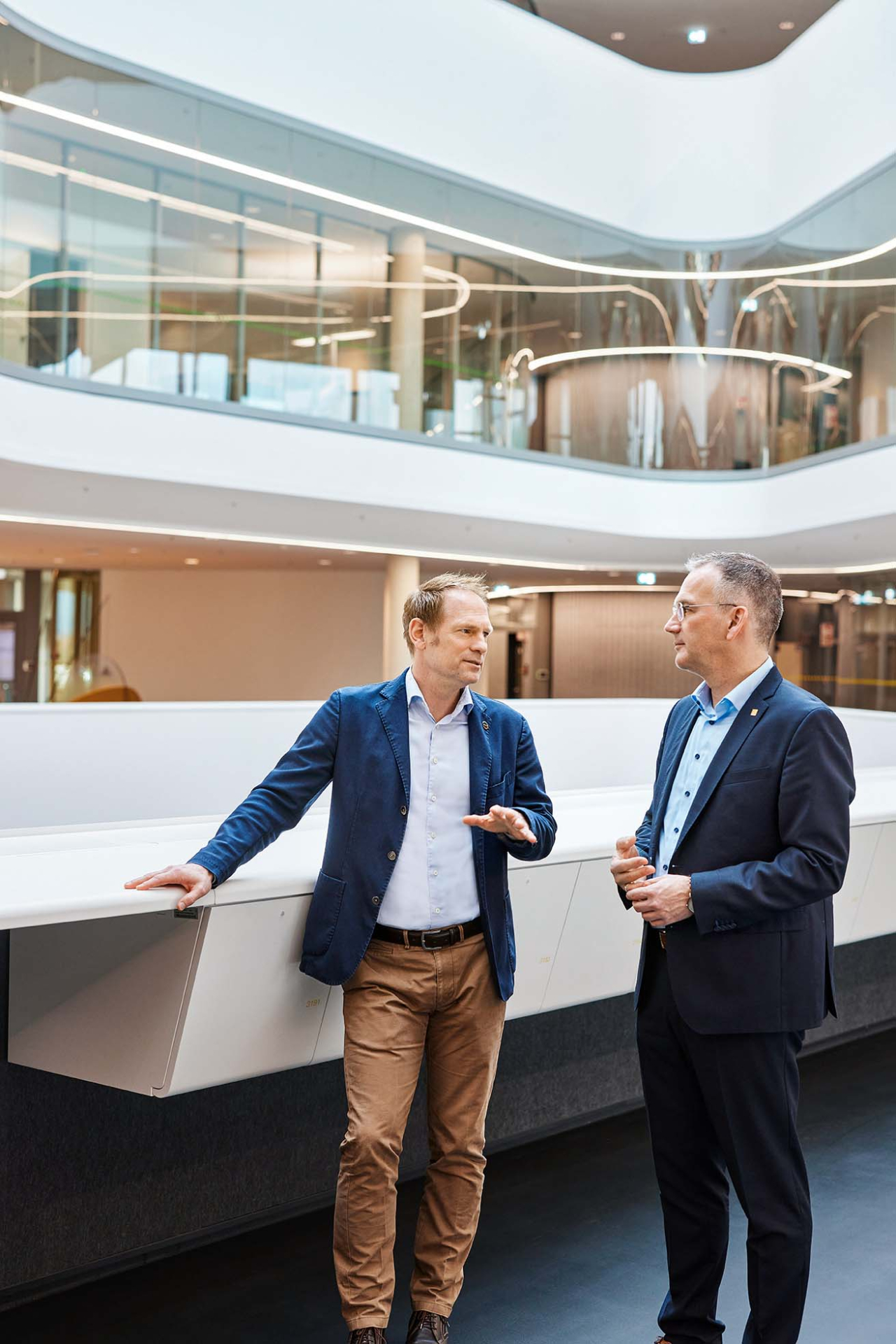
For a company, the circular economy is a much bigger task. Why did Covestro decide to become a pioneer?
Dreier: We firmly believe that long term, a circular economy is the only way to create a sustainable future for our planet while staying a successful business ourselves. As an energy-intensive company, we knew the enormous effort required of us – especially because our operations and processes generate exactly the CO2 emissions that we need to avoid. We want our own production to be completely climate neutral by 2035. And by 2050, we also want to reduce our Scope 3 emissions to zero – by that I mean the emissions our suppliers and customers generate up- and downstream in the product value chain. We’ve drawn up a concrete roadmap for achieving this, focused on four factors: renewable energy, alternative raw materials, innovative recycling methods and cross-industry partnerships.
Mr Selders, what sustainability goals has Endress+Hauser set itself?
Selders: We want an 80 percent reduction in our company’s direct and indirect greenhouse gas emissions – Scope 1 and 2 – by 2034. And we want to achieve net zero by 2050 at the latest, Scope 3 included, which means the upstream and downstream value chains. We will make rapid progress in Scope 1 and 2 by purchasing green electricity, for example, and taking steps to improve our energy efficiency. Scope 3 presents us with challenges. These are emissions produced by things like manufacturing the steel and aluminum that goes into our products, or when our measuring instruments are operating at customers’ plants. We’re seeking cooperation with our suppliers and customers on this.
And what approaches is Endress+Hauser taking to implement the circular economy?
Selders: Our instruments are very long-lasting; they often operate over decades. The metals used can be recycled afterwards, as can the electronics. That’s why we concentrate on production and use. We have a significant lever in procurement, for example by purchasing lowemission primary products from suppliers who use green electricity or work with a high proportion of recycled materials. Design practices present a further lever. We’re talking eco-design here – things like optimizing the use of materials, energy requirements and instrument repairability.
Mr Dreier, what will it take for the circular economy to gain momentum?
Dreier: Such a gigantic transformation is achievable only by all forces of society pulling in unison. There are many businesses powering ahead already, but they can’t make the transition to climate neutrality and a circular economy on their own. They need full support from politicians, scientists and society in general. And this is where the problem still lies. This is well illustrated by the energy issues in Germany and elsewhere in Europe. There’s a lack of sufficiently CO2-reduced and CO2-neutral energy at affordable prices. Expansion in this field is making slow progress, not least due to lengthy approval procedures. So we need transitional technologies to hold down CO2 levels. Yet there are brakes being put on these, including in Germany, where technologies such as carbon capture and storage, and carbon capture and usage, have yet to gain official approval. Moving ahead with innovative and energy-efficient production processes requires investment, but this in turn requires politicians to provide planning certainty.
Selders: A key condition is giving the economy sufficient time and freedom to adapt. This is a generational task; idealism and sacrifice won’t solve it. We need to combine sustainable transformation with economic growth and achieve that transformation at competitive costs. Technological progress will help to get us there.
"Such a gigantic transition to a circular economy is achievable only by all forces in society pulling in unison."
Thorsten Dreier
CTO of Covestro

How do new technologies and processes contribute to implementing your strategy, Mr Dreier?
Dreier: We see new technologies as core elements on the path toward a circular economy. With them we can produce even more dependably, make best use of resources and avoid emissions. We do everything we can to make our processes as efficient and energy-saving as possible – and thus as sustainable as possible. We’re constantly developing new processes to this end. State-of-the-art measurement and automation technology plays a central role here. For one thing, it’s used for predictive maintenance. That in turn reduces the effort involved in testing safety equipment and simplifies instrument commissioning. Manufacturers of measurement and automation technology have the expertise to help us here. Improved diagnostics for field instruments benefit us enormously.
How is Endress+Hauser supporting customers with the transformation, Mr Selders?
Selders: Measurement and analysis technology does a lot to make systems more efficient by reducing energy consumption, increasing yield and improving availability. And we want to be at our customers’ side as they develop new processes and bring them to maturity. Our strength is our specialization in instrumentation. With our wealth of experience and knowledge we can support customers to operate their plants as efficiently possible. New technologies allow monitoring product quality during the production processes. Digitalization is also providing new insights and simplifying many tasks. And, of course, in collaboration with customers we are constantly developing our offering further.
How important are partnerships, Mr Dreier, when it comes to creating the circular economy?
Dreier: The circular economy has to be a joint achievement. Scope 3 emissions closely link individual players in the value creation process. With that in mind, we focus on cooperation with companies all along the chain, from raw materials to the end product. Exchanging knowledge and expertise is part of that effort. We also get involved with industry associations such as NAMUR – the user association of automation technology in process industries – where we work alongside other companies to define the operators’ requirements regarding standardization in automation technology.
Selders: Cooperating with customers at association level is very valuable for us. Generally speaking, I see cooperation as an important part – perhaps the most important part – of achieving sustainable transformation.
How is Endress+Hauser positioned for the challenges posed by sustainable transformation and the circular economy?
Selders: For this generational task, we as a family business have the long-term perspective that it takes. This provides security to people and stability to the company. We can focus on our primary goals and keep on pursuing them even when the unexpected happens. This is crucial in an environment that is developing ever faster and more unpredictably. And then there is our cooperative culture, developed over many years and deeply rooted in our company DNA. All of this helps us to harness the power of cooperation both inside and outside Endress+Hauser. It also gives me confidence that we will solve the challenges together with our customers.
Mr Dreier, what makes you confident of being able to implement Covestro’s ambitious strategy?
Dreier: I believe that many political, economic and societal players have now realized that there will be no future for this planet without a genuine circular economy. All parts of the economy have long been engaged in transformation. That makes me very optimistic, and I am convinced that we will accelerate further in the coming years.
Published 14.07.2025, last updated 11.08.2025.
Dive into the world of the process industry through new exciting stories every month with our «changes» newsletter!
